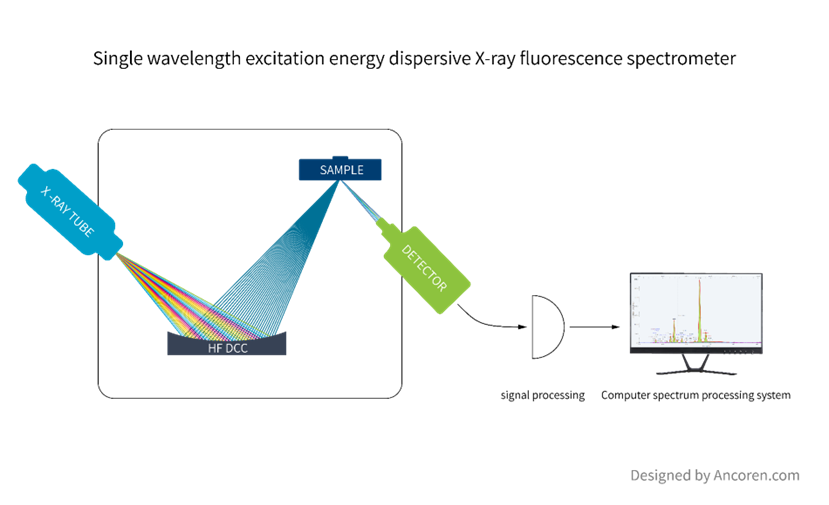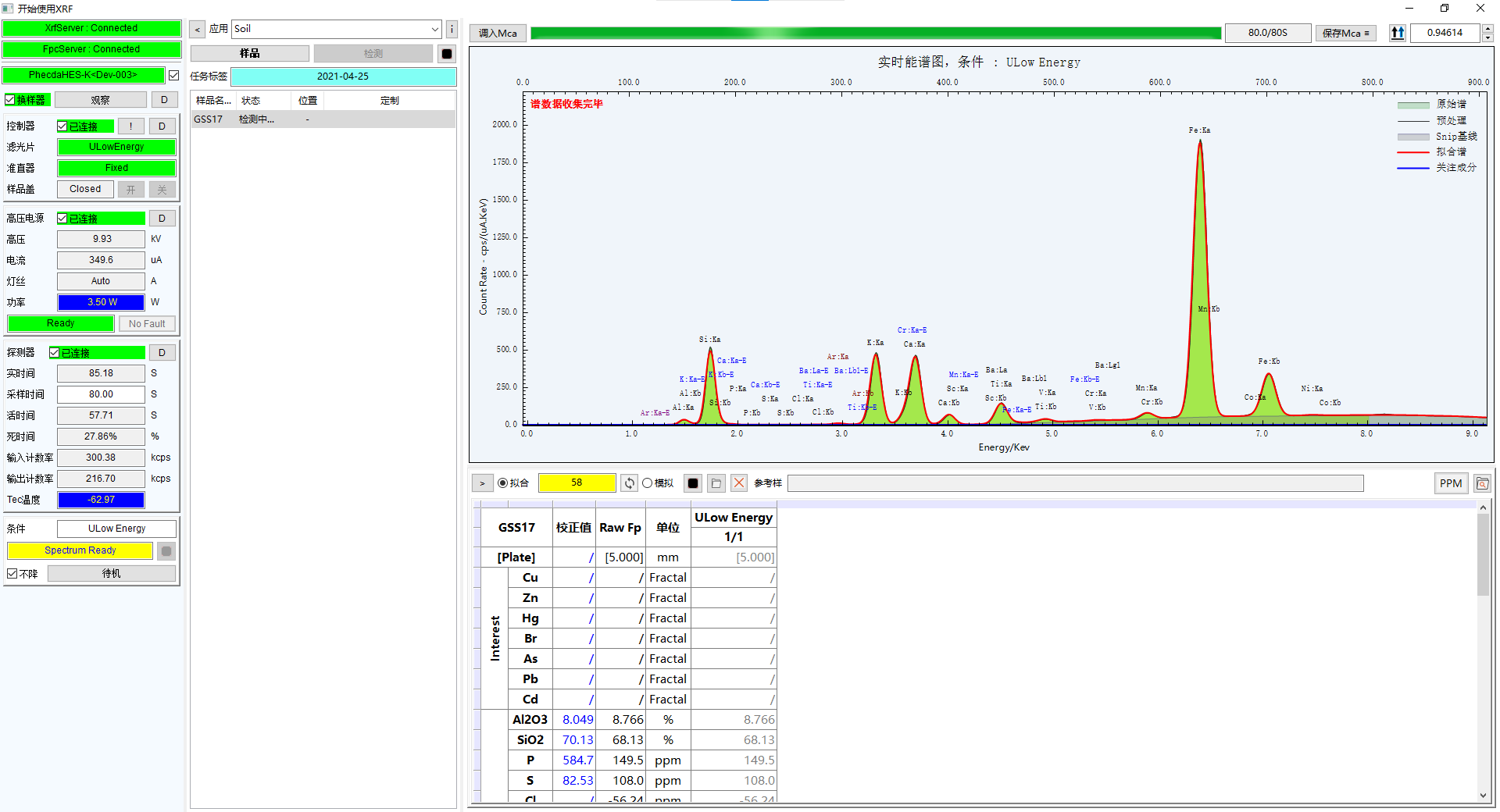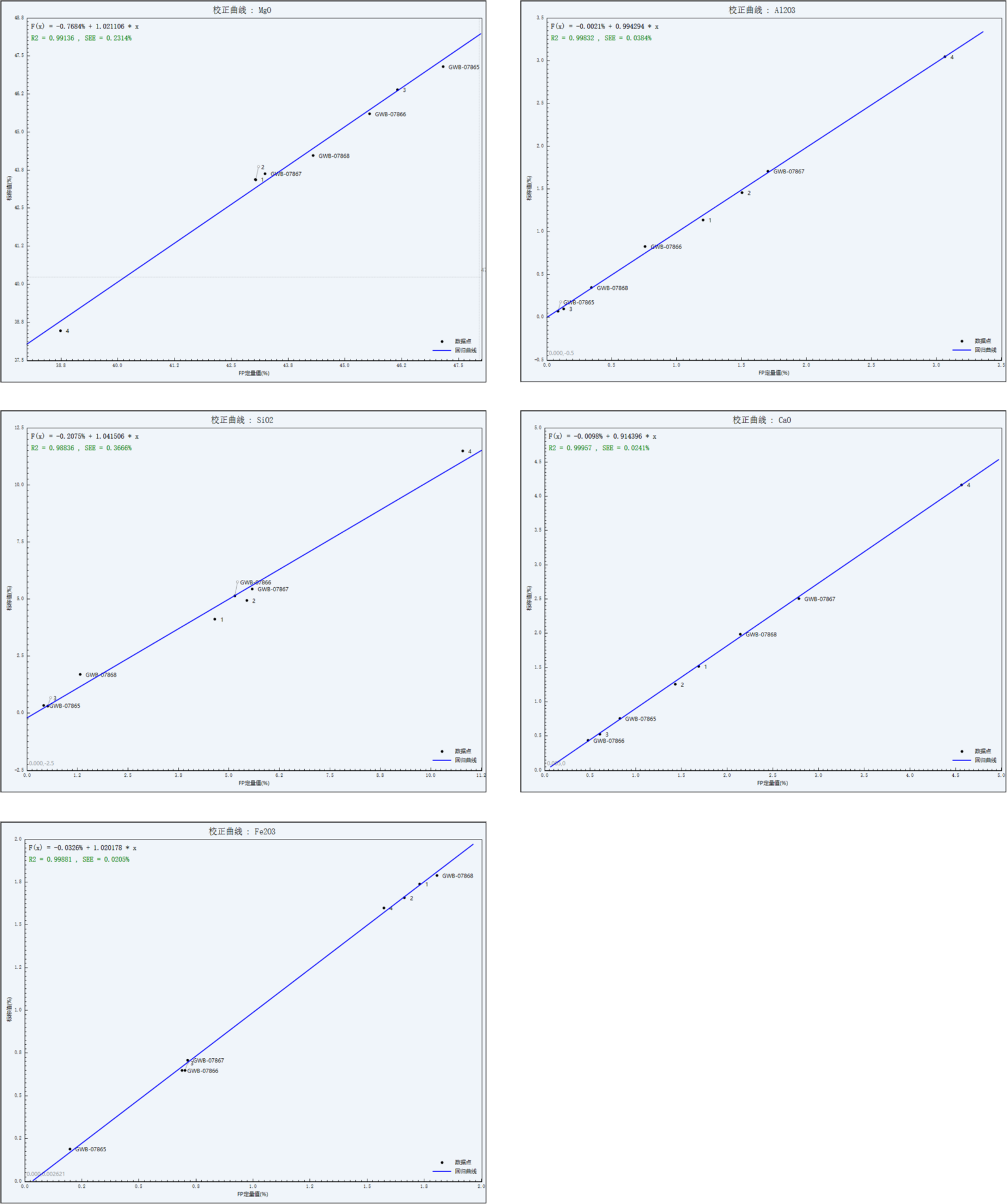

Application Overview
Magnesite is a silicate mineral of magnesium, which is the main natural mineral raw material for the manufacture of magnesium-containing refractories. The world reserves of magnesite are about 12 billion tons, of which China has about 5 billion tons, a very large proportion.
The chemistry of magnesite is MgCO3, and other oxides Cao, SiO2, Fe2O3, Al2O3, etc. are impurities. when the impurity content of magnesite is large, will seriously reduce its fire resistance, and will cause difficulties to the production process, so it is particularly important to analyze the content of impurity elements.
The single-wavelength X-ray fluorescence spectrometer MERAK-SC and the fast fundamental parameter method (Fast FP) developed by Ancoren can simultaneously analyze the content of each element of magnesite, and the analysis precision of each element oxide meets the requirements of “GB/T 34332- 2017 Requirements for Chemical Analysis of Magnesite and Dolomite Refractory Products”. At the same time, it has the advantages of simple sample preparation, fast analysis speed and low analysis cost, and can also be extended to the analysis of each element composition of magnesia.
Test Procedure
The sample is processed by tablet pressing method, and the specific process is shown in the figure below:

Technical Principles
(1)Monochromatic focused excitation technology

The single-wavelength X-ray fluorescence spectrometer MERAK-SC perfectly combines the monochromatic technology of the fully focused hyperbolic bending crystal with the secondary target. The fully-focused hyperbolic bending crystal monochromates the characteristic rays of the target material in the X-ray tube emission spectrum, and focuses the diffraction to one point of the sample, which greatly reduces the interference of the background of continuous scattered rays in the X-ray to the element spectrum of the sample, and improves the element detection signal-to-noise ratio, makes up for the lack of sensitivity of traditional energy dispersive X-ray fluorescence spectrometers to light elements. The single-wavelength X-ray fluorescence spectrometer realizes the detection and analysis of micro-elements and trace-elements.(Invention Patent:201510970857.0)
(2)Fast fundamental parameter method

Fundamental parameter method (FP) is a cutting-edge technology of XRF quantitative analysis. which solves the complexity and uncertainty of quantitative analysis of XRF matrix effect, inter-element absorption enhancement effect, spectral line overlapping interference, detector effects and so on, and realizes the quantitative analysis of sample elements in the absence of standard samples. The Fundamental parameter method (Fast FP2.0) developed by Beijing Ancoren not only uses the basic parameter library, but also establishes a series of mathematical models, so as to improve the basic parameter method to the level of quantitative analysis, which is in the international leading level in sample adaptability, quantitative accuracy, scalability and other aspects.
Application data
(1)Linearity
The Fast basic parameter method (Fast FP 2.0) obtained the content of each element (or oxide) through the full spectrum fitting and theoretical calculation. The correction curve was established between the Fast FP calculated value and the standard content value of the magnesite standard sample. The linear correlation chart of each target element (or oxide) is shown below. It can be seen that linear correlation coefficient R² is between 0.99 and 0.999, and a good linear relationship is the guarantee of quantitative accuracy.

(2)Repeatability
The test was repeated 7 times using the standard sample of magnesite 28727-2014-magnesite3#, and the repeatability results were as follows:
| Element |
SD(%) |
| MgO |
0.036 |
| CaO |
0.002 |
| Fe2O3 |
0.001 |
| SiO2 |
0.008 |
| Al2O3 |
0.002 |
Features and advantages
 Stable
Stable
Analysis data can be obtained within one hour after startup, Excellent repeatability in continuous test, daytime test and long-term test.
 Accurate
Accurate
The theoretical calculation of fundamental parameter method can eliminate the analysis error caused by sample matrix difference and spectral line interference, and only needs a few standard (fixed) samples to obtain accurate quantitative results.
 Low consumption
Low consumption
No gas consumption, liquid nitrogen refrigeration, vacuum, etc., low failure rate in long-term operation.
 Fast
Fast
The analysis of a single sample can be completed in 3 minutes.
 Synchronous
Synchronous
The contents of more than ten elements and oxides of Na-Zn in magnesite and magnesite were analyzed synchronously.
Original statement:
This article is the original work of ancoren company except for the quotation. If it is forwarded and quoted, the source must be indicated, otherwise it may involve infringement. For more detailed technical information, please consult the staff of Ancoren.







 Stable
Stable Accurate
Accurate Low consumption
Low consumption Fast
Fast Synchronous
Synchronous